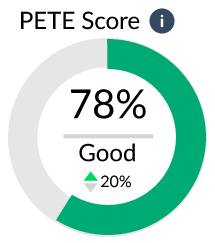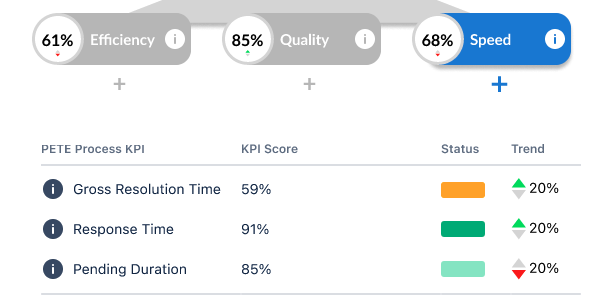What is the PETE Score?
Overview
The PETE Score is your new compass for IT support efficiency, quality, and speed. Think of it as the credit score for your IT support team.
Process scoring is an innovative method for objectively assessing the performance of processes and their users. Using process mining techniques and layering decades of ITSM consulting expertise, it calculates a set of KPIs that evaluate the execution of key process steps, then aggregates these KPIs into single scores for a clear performance snapshot.
Thanks to PETE, the heavy lifting of processing vast amounts of data is handled daily, providing a clear view of your IT support organization and uncovering valuable insights along with actionable recommendations.
PETE Score

PETE Score is an aggregated score of several KPIs which measure the Efficiency, Quality and Speed of ITSM process implementations.
The score is displayed with a color code and a qualifier (e.g., Good), and it also indicates how the score has changed compared to the previous time period selected in the Global Filter for the dashboard.
You can further drill down into the PETE Score to explore performance for each KPI. The first level of the drill-down displays the split across the key dimensions: Efficiency, Quality, and Speed.

Similar to the PETE Score, you can view the aggregated score for each dimension, which is calculated across all related KPIs. It also indicates how the score has changed compared to the previous period, as set in the Global Filter.
In the next step you drill down further into each dimension to see the performance for each KPI.

The KPIs listed per dimension could vary based on the availability of relevant data in your projects. PETE will also call out industry best practices for your teams.
PETE Score does not use maturity models
PETE Score does not use any (process) maturity models to calculate the score.
Traditional maturity models rely on questionnaires, where the quality of answers depends on the knowledge and experience of the respondent, potentially leading to bias.
We’ve tackled this issue by analyzing data directly from our clients’ ITSM systems, providing an objective and data-driven view of process execution.
.png)